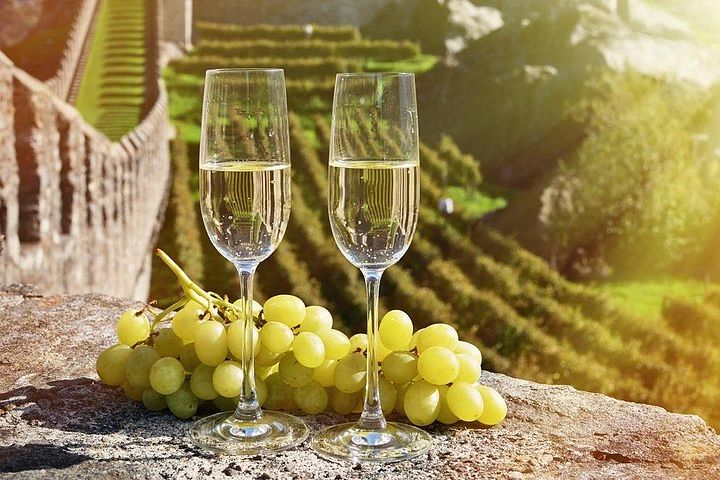[ad_1]
The Art of Champagne: Exploring the Sparkling Wine Region
Champagne, the world-renowned sparkling wine, is not just a beverage but an art form perfected over centuries. Produced exclusively in the Champagne region of France, this exquisite drink has a rich history and a complex production process that sets it apart from all other sparkling wines. In this article, we will explore the art of Champagne, from its origins to its modern-day production, and delve into what makes this region and its sparkling wine so special.
The History of Champagne
The story of Champagne begins in the 17th century when the region’s unique soil and climate conditions were discovered to be ideal for growing the grapes necessary for making sparkling wine. The Benedictine monk Dom Pérignon is often credited with the invention of Champagne, as he was responsible for many developments in the production process, including blending different grape varieties to achieve a more balanced flavor profile and perfecting the method of fermenting wine in bottles to create the signature effervescence.
The reputation of Champagne grew steadily over the following centuries, with the wine becoming associated with royalty, celebrations, and luxury. By the 19th century, Champagne had firmly established itself as the drink of choice for special occasions and had gained a loyal following around the world.
The Terroir of Champagne
The Champagne region’s unique terroir, a combination of its soil, climate, and geographical features, is essential to the distinctiveness of its wines. The chalky soil, cool climate, and specific location at a northerly latitude all contribute to the grapes’ characteristics, including their acidity, flavor, and aroma.
-
- Soil: The chalky subsoil in Champagne provides excellent drainage and imparts a mineral character to the grapes, which translates into a lively and fresh taste in the finished wine.
-
- Climate: The marginal climate of Champagne, characterized by cool temperatures and high humidity, contributes to the slow ripening of the grapes, allowing them to retain their acidity and develop complex flavors.
-
- Geography: The region’s location on the northern edge of the wine-growing world gives its wines a unique balance of ripeness and acidity, making them well-suited for sparkling wine production.
The Production Process of Champagne
The method used to produce Champagne, known as the traditional or méthode champenoise method, is a labor-intensive and precise process that has been passed down through generations of winemakers. It involves several distinct stages, each of which plays a crucial role in bringing out the wine’s unique characteristics.
First, the grapes are harvested by hand, and only the best ones are selected for use in Champagne production. The grapes are then gently pressed, and the juice is fermented into still wine. Next, a carefully measured mixture of sugar and yeast, known as the liqueur de tirage, is added to the still wine, which is then bottled and sealed with a crown cap.
During the secondary fermentation, which takes place in the bottle, the yeast consumes the added sugar, producing carbon dioxide as a byproduct, which creates the wine’s effervescence. Over time, the yeast cells settle at the bottom of the bottle, and the wine undergoes a complex aging process, during which it develops its characteristic flavours and aromas.
The Art of Blending
One of the most essential aspects of Champagne production is the art of blending. Champagne is typically made from a blend of several grape varieties, including Chardonnay, Pinot Noir, and Pinot Meunier. Each grape variety contributes its unique characteristics to the final blend, and the skillful blending of these components is what gives Champagne its complexity and balance.
Master blenders, known as chefs de cave, are responsible for creating the house style of the Champagne producers by selecting the right combination of base wines from different vintages and vineyard plots. They must have an exceptional palate and a deep understanding of the individual qualities of each wine to achieve consistency and excellence, year after year.
The Champagne Region Today
Today, the Champagne region continues to produce some of the world’s most prestigious and sought-after wines. With its distinctive terroir, time-honored production methods, and strict quality standards, Champagne holds a unique position in the world of wine, commanding a high level of respect and admiration.
Additionally, the region has been designated as a UNESCO World Heritage Site in recognition of its cultural significance and the centuries-old traditions that have been preserved within its vineyard landscapes and wine cellars.
Conclusion
In conclusion, the art of Champagne is a fusion of history, tradition, and craftsmanship that has stood the test of time. From the region’s unique terroir to the painstaking production process, every aspect of Champagne reflects the dedication and passion of the winemakers who strive to create exceptional sparkling wines. Whether enjoyed as an aperitif, a toast at celebrations, or a symbol of luxury, Champagne continues to captivate and inspire wine enthusiasts around the world, making it a true timeless masterpiece of the wine world.
[ad_2]

